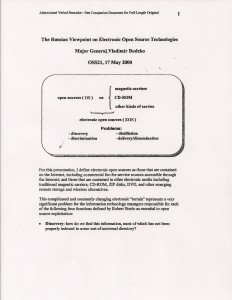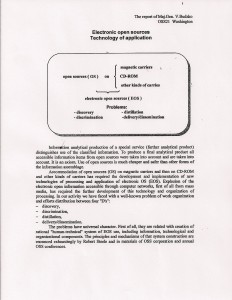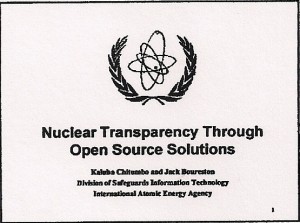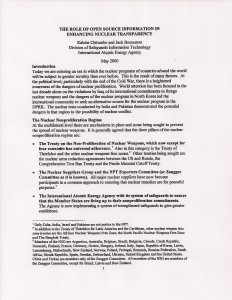Major General Vladimir Budzko was a great professional and a most welcome senior contributor to OSS 2000. He delivered the short version below and also provided the long version of his reflections below as well.



The truth at any cost lowers all other costs — curated by former US spy Robert David Steele.
Howard Rheingold, former Editor of the Whole Earth Review and one of the pure-gold original thinkers in the Stewart Brand and Kevin Kelly circle, lays down a serious challange to both decisionmakers and software producers that has yet to be fully understood. Originally published in 1985, this book was a “must read” at the highest levels of advanced information processing circles then, but sadly its brilliant and coherent message has yet to take hold–largely because bureaucratic budgets and office politics are major obstacles to implementing new models where the focus is on empowering the employee rather than crunching financial numbers.
This book is a foundation reading for understanding why the software Bill Gates produces (and the Application Program Interfaces he persists in concealing) will never achieve the objectives that Howard and others believe are within our grasp–a desktop toolkit that not only produces multi-media documents without crashing ten times a day, but one that includes modeling & simulation, structured argument analysis, interactive search and retrieval of the deep web as well as commercial online systems, and geospatially-based heterogeneous data set visualization–and more–the desktop toolkit that emerges logically from Howard's vision must include easy clustering and linking of related data across sets, statistical analysis to reveal anomalies and identify trends in data across time, space, and topic, and a range of data conversion, machine language translation, analog video management, and automated data extraction from text and images. How hard can this be? VERY HARD. Why? Because no one is willing to create a railway guage standard in cyberspace that legally mandates the transparency and stability of Application Program Interfaces (API). Rheingold gets it, Gates does not. What a waste!

Few people have a proper appreciation for the security value of Open Source Intelligence (OSINT). It is the ONLY form of decision-support that can be shared with ANYBODY, and therefore it is the easist foundation for establishing a common view of the first 80% where it is easy to agree, and of the final 20% where more difficult and nuanced dialog must take place. The International Atomic Energy Agency (IAEA) continues to respect the needs of developing nations for nuclear energy, the fears of varied nations with respect to nuclear munitions, and the value of OSINT in addressing both sides of the nuclear coin.



Retired Army Brigadier General, with extensive UN and NATO experience. After a 38 year career, retired from the Canadian Forces in 2001. Currently work as an analyst in the Library of Parliament supporting the House of Commons Standing Committee on National Defence, the Senate Sub-Committee on Veterans Affairs and the Canada-NATO Parliamentary Assembly. Also pursuing a PhD in War Studies with the Royal Military College of Canada.
Phi Beta Iota: BGen Jim Cox, CA was the Deputy N-2 for the Supreme Headquarters Allied Powers Europe (SHAPE) which is also the central headquarters element for the North Atlantic Treaty Organization (NATO). If there is one person who can be identified as the “do-er” who took Capt Patrick Tyrrell's paper on the need for NATO OSINT, and ultimately mandated, funded, and saw through the creation of the three core NATO conceptual publications on OSINT, it would be Brigadier Cox.